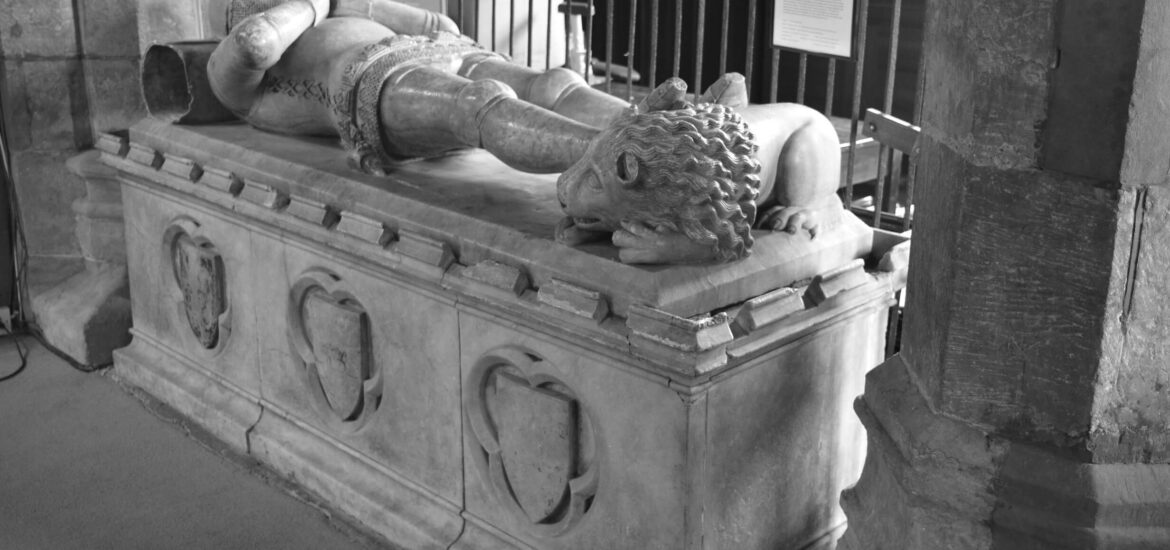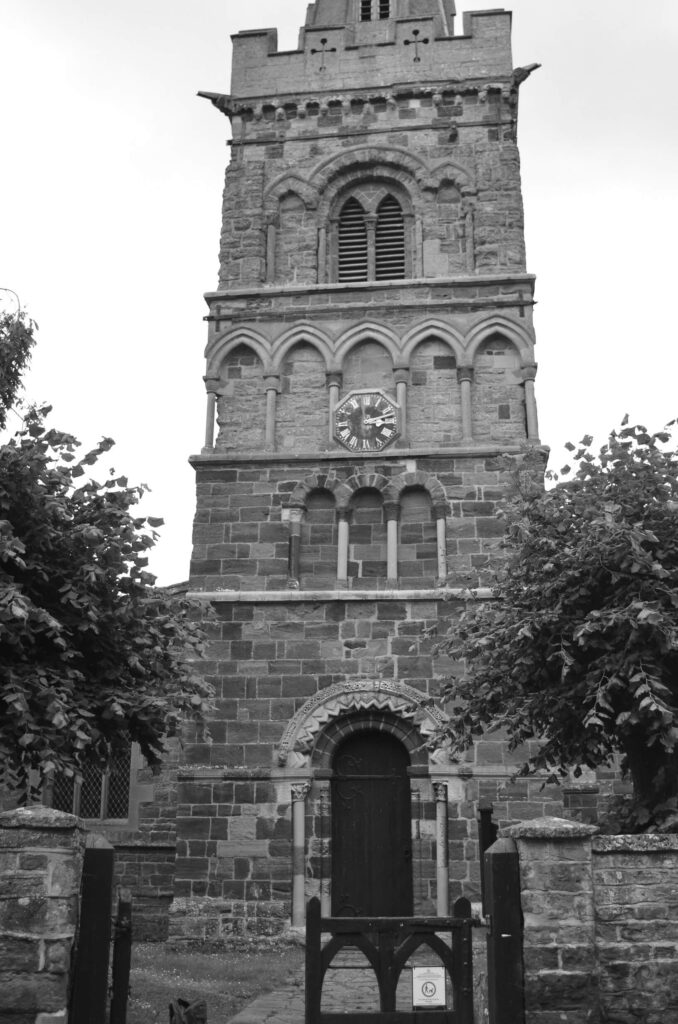
Perched on a hill in the centre of the village, the church of St Andrew’s in Spratton is a fine example of transitional architecture between Romanesque and Norman style. The doorway in the tower is Norman and you can see the contrasting styles of the lower part of the tower and the upper part. It was dedicated to St Luke in the 18th and 19th centuries but it was discovered that the original dedication was to St Andrew and it reverted to this in 1949. The village itself packs quite a punch for its size as it has links to Emily Davison (the suffragette who threw herself under King George V’s horse) and George Washington. The font at which his great-great grandmother, Amphillis Twigden, was baptised is still in the church.
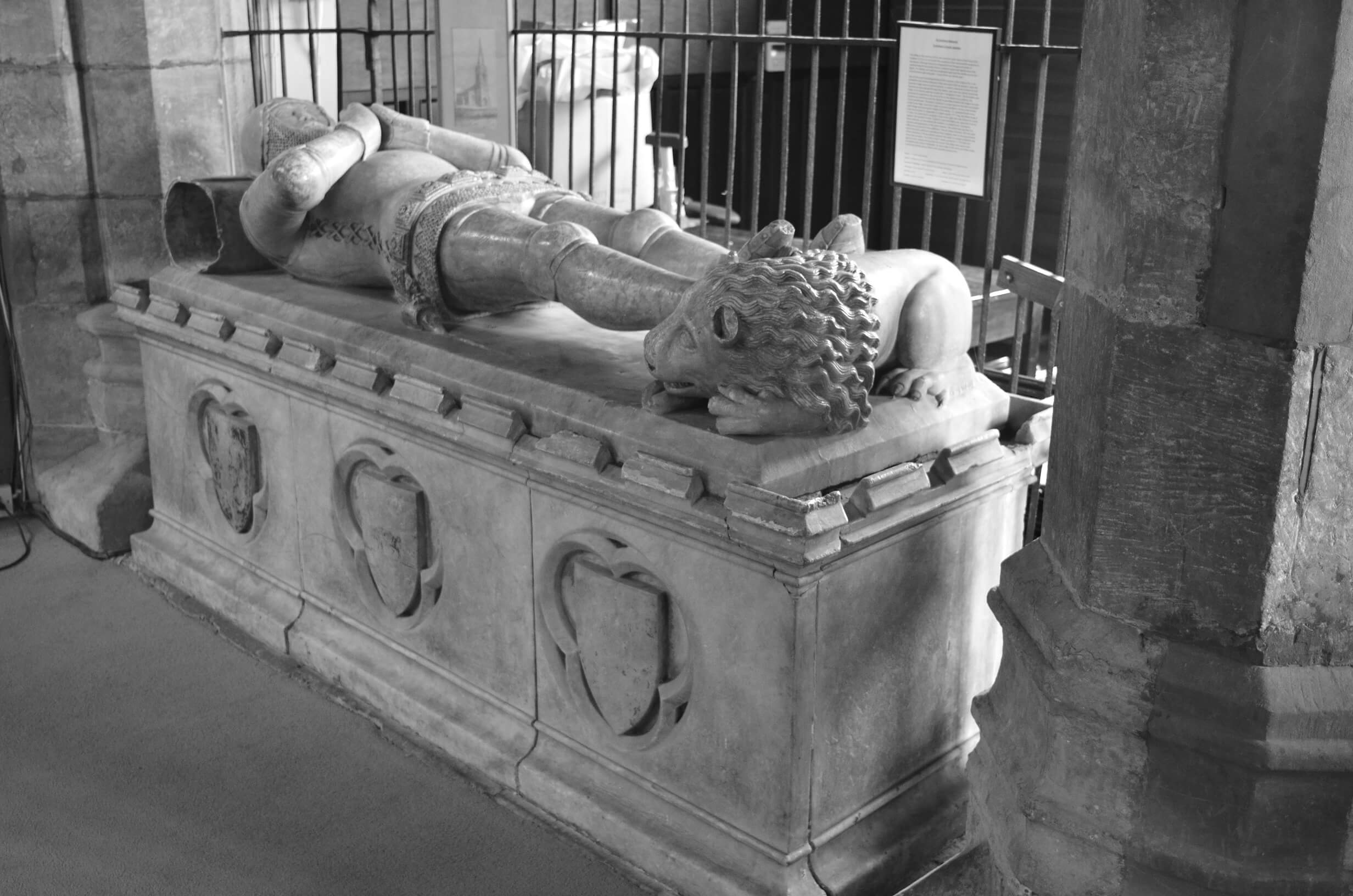
Inside the church is an alabaster tomb of Sir John Swinford who died 26th December 1371. Sir John served with the Duke of Lancaster, as can be seen by the ‘SS’ collar around his neck. The tomb was originally painted and traces of colour can still be seen today. There is disagreement whether Sir John Swinford was related to the Sir Hugh Swynford, first husband of Katherine de Roet, mistress of John of Gaunt and mother of the Beaufort children. Some researchers believe him to be the younger brother of Hugh. The fine craftmanship of the effigy is shown by the detail on the chainmail and the lion’s mane. You can just make out the boar on one of the trefoils.
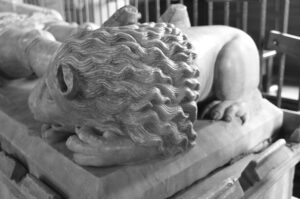
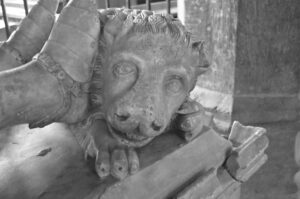
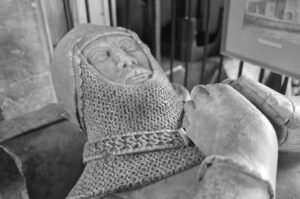
The plaque in the church giving an explanation of the effigy of Sir John Swinford reads:
The effigy to the memory of Sir John Swinford (who died on the Feast of St Stephen 1371) is an extremely fine example of the monumental sculpture of the period. Although there is no departure from the general mode of representing the deceased, there is unusual repose and dignity about this figure. The details are most accurately portrayed and the whole was at one time finished in gilt and paint. Traces of this can still be seen. One of the most interesting details of the costume is the collar of Ss, in all probability the earliest example of this decoration that we possess. Upon his head the knight wears a conical basinet, to which is attached a camail of mail fastened by laces passed through the staples and over the camail comes the Collar of Ss, tied by what we would call a ‘Hangman’s Knot’. The shoulders are protected by epaulieres, the arms as far as the elbows by coudieres, the forearms by vambraces and the hands by gauntlets divided into fingers formed of articulated steel. The body is covered in a jupon laced at the side and pinked at the lower edge. Over this is worn a baudrick buckled in front, ornamented with foliage and bearing the initials of the owner ‘I.S.’, repeated three times. From the baudrick is suspended a 2-edged sword, 4’4” long, the blade being 3’4” long. The misericord is slung by a loop at the right side and below the jupon, appears the hauberk of mail. Cuissarts cover the thighs and upon the front of these defences, an inch below the hauberk, is a raised hand, checked at intervals and apparently of the same material. The authorities say that it is difficult to account for these additions. They do shew, however, the care with which the early craftsmen reproduced their subjects, even to the peculiarities of the individual. A tilting helmet supports the head: it is deeply hollowed and shews occularis. The Crest, a boar’s head, surmounts it. The feet rest against a lion, whose tail encircles the sword. The effigy rests upon a low embattled alter-tomb of alabaster. On both sides of the tomb are three circles containing trefoils and on them were painted various arms.
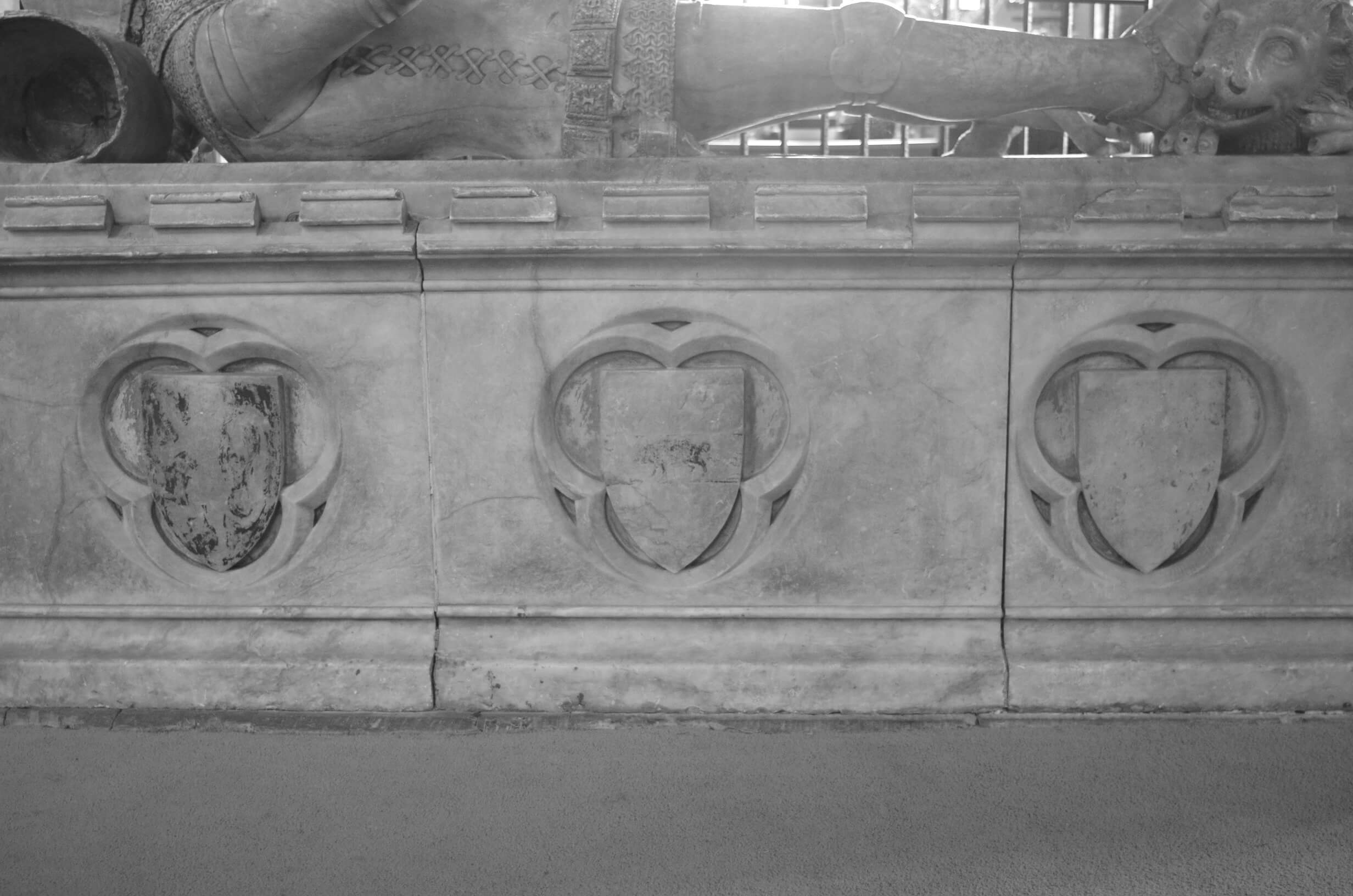
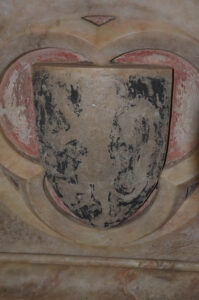
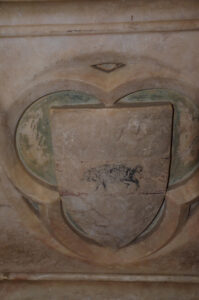
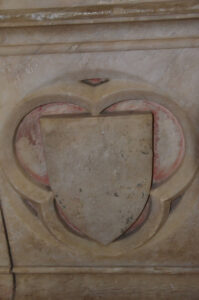
Glossary
Basinet – a medieval steel helmet
Camail – a medieval hood of mail suspended from the basinet to protect the head and neck
Epaulieres/coudieres – armour plating for the shoulders and elbows
Vambraces – armour plating for the forearms
Jupon – a close fitting sleeveless jacket
Baudrick – a belt
Misericord – a long, narrow knife, used to deliver the death blow
Hauberk – a tunic of chainmail
Occularia – the eyeslot of a helmet
